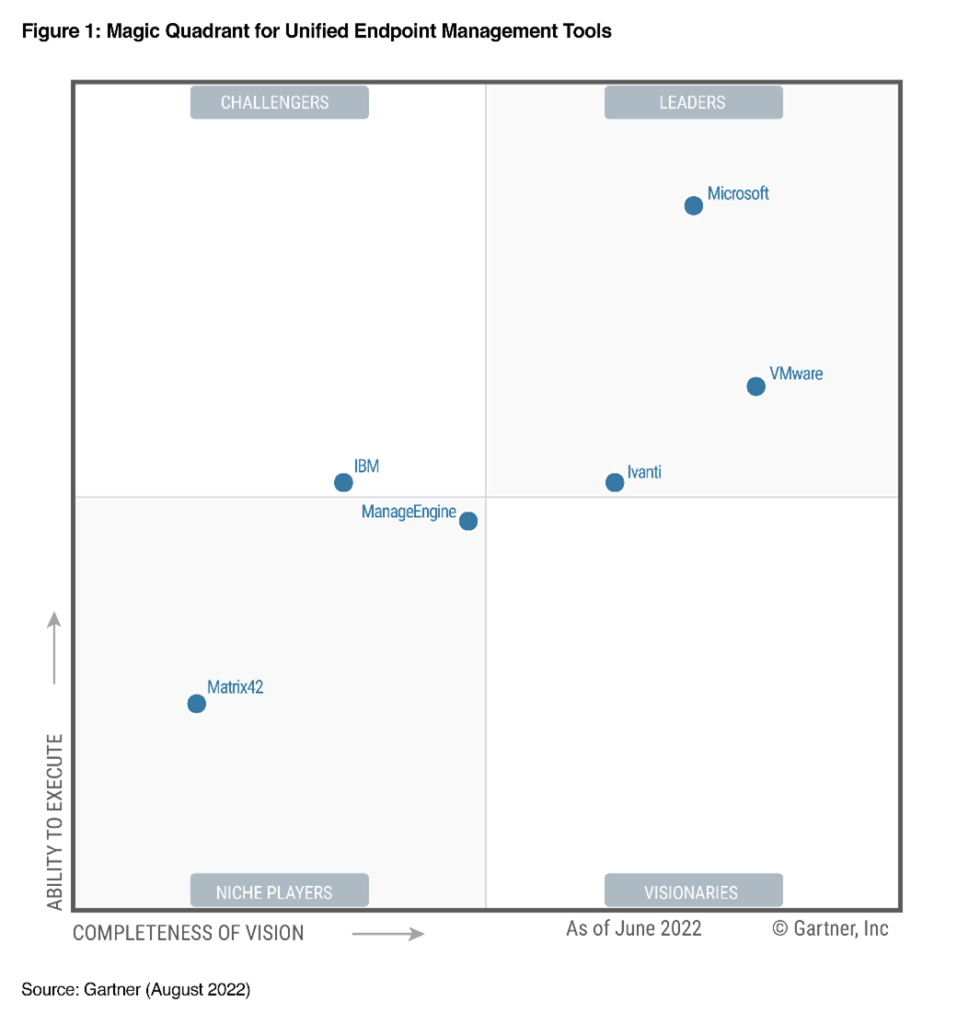Understanding Unified Endpoint Management: A Comprehensive Guide

Unified Endpoint Management (UEM) is a set of tools and technologies used to manage and secure all endpoints in an organization, including mobile devices, laptops, servers, desktops, VMs, Hypervisors, browsers, tablets, iPads and Internet of Things (IoT). UEM provides a centralized approach to endpoint management, allowing administrators to streamline their workflows, reduce complexity, and improve security.
In this article, we will take a closer look at Unified Endpoint Management, its benefits, and the technologies behind it.
What is Unified Endpoint Management?
Unified Endpoint Management (UEM) is a management solution that enables organizations to manage and secure all endpoints from a single platform. With UEM, administrators can manage a variety of endpoints, including smartphones, tablets, laptops, desktops, and IoT devices, regardless of the operating system or ownership model.
UEM allows administrators to configure policies, update software, and enforce security measures across all endpoints, ensuring that devices are secure and compliant with organizational policies.
The Benefits of Unified Endpoint Management
Unified Endpoint Management offers several benefits to organizations, including:
- Simplified Management: UEM provides a centralized approach to endpoint management, enabling administrators to manage all endpoints from a single platform.
- Improved Security: UEM allows administrators to enforce security policies across all endpoints, reducing the risk of security breaches.
- Increased Efficiency: UEM enables administrators to automate routine tasks, such as software updates and security patches, reducing the workload on IT staff.
- Better User Experience: UEM provides a consistent user experience across all endpoints, regardless of the operating system or device type.
- Cost Savings: UEM can help organizations save on IT costs by reducing the number of tools required to manage endpoints.
Technologies behind Unified Endpoint Management
UEM relies on several technologies to manage and secure endpoints, including:
- Mobile Device Management (MDM): MDM is a technology used to manage and secure mobile devices, such as smartphones and tablets. With MDM, administrators can configure policies, manage applications, and enforce security measures.
- Mobile Application Management (MAM): MAM is a technology used to manage and secure mobile applications. With MAM, administrators can control access to corporate data and enforce security policies for individual applications.
- Desktop Management: Desktop Management is a technology used to manage and secure desktops and laptops. With Desktop Management, administrators can configure policies, update software, and enforce security measures.
- Identity and Access Management (IAM): IAM is a technology used to manage user identities and access to resources. With IAM, administrators can control access to corporate resources based on user identity and enforce security policies.
- Internet of Things (IoT) Management: IoT Management is a technology used to manage and secure IoT devices. With IoT Management, administrators can configure policies, update firmware, and enforce security measures for IoT devices.
Unified Endpoint Management: Addressing IT Admin Challenges
Unified Endpoint Management (UEM) software has become a game-changer for IT administrators, streamlining the management of devices, operating systems, and user management.
Here are some of the significant challenges that IT admins face when managing endpoints, and how UEM can make a difference:
Challenge 1: Visibility
The traditional approach to endpoint management that focuses on devices does not provide adequate visibility into user needs and endpoint conditions. IT administrators need a better understanding of their network inventory and the ability to fix any problems.
UEM software can help IT admins manage OSs, users, and devices based on priority and demand, providing better visibility into endpoint requirements and usage patterns.
Challenge 2: Diversified Automation
IT admins often rely on different tools, such as MDM, EMM, client management, or Active Directory-based tools, to manage endpoints. This can result in inconsistent automation procedures, such as application management and policy deployments.
UEM software streamlines endpoint management, eliminating inconsistencies and providing a cohesive report of all endpoints. With UEM, IT admins can easily rely on reports to ensure that their endpoint management is consistent and effective.
Challenge 3: Negligence of Root-Cause Analysis
Many businesses focus on quick fixes rather than getting to the root of a problem, which can lead to recurring issues. UEM software provides automated monitoring and in-depth predictive analysis, enabling IT departments to forecast and prevent future issues.
This approach enhances credibility, reliability, and value to businesses. With UEM software, IT admins can get a cohesive report of all endpoints, enabling easy and swift analysis.
Gartner’s Magic Quadrant and Choosing Your UEM Vendor
When choosing a UEM vendor, businesses should consider Gartner’s Magic Quadrant. Gartner’s analysts perform in-depth product analysis to include the leading vendors in the UEM space in its Magic Quadrant.

The analysis considers the strengths and weaknesses of each product in its stage of development, helping businesses to make informed decisions about choosing a UEM vendor.
Tips for Selecting the Right Unified Endpoint Management Tool for Your Business
When it comes to selecting a UEM solution for your business, it’s important to analyze your organization’s demands based on the types of endpoints you have. For instance, if your business has mostly IoT devices but only a few desktop PCs, your requirements will be different from an organization with a large number of desktops.
By understanding the unique demands of your network, you can evaluate vendors that offer the features you need and decide which one best fits your needs within your budget.
You can also take a look at some of the best UEM software in the market, give them a try, evaluate and choose the right UEM tool for your network.
Conclusion
Unified Endpoint Management is a crucial tool for organizations looking to simplify endpoint management, improve security, and increase efficiency.
By leveraging a single platform to manage all endpoints, organizations can reduce complexity, save on IT costs, and provide a better user experience. With the right UEM solution, organizations can streamline their workflows, reduce risk, and improve overall endpoint management.








